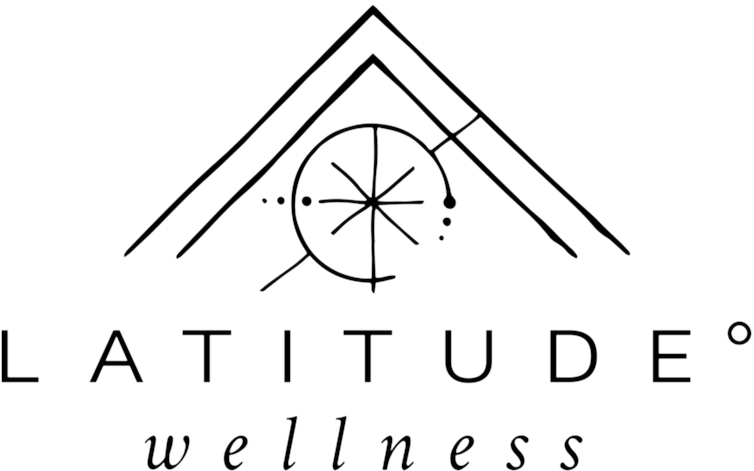Elevate Your Winter Adventure with Latitude Wellness: A Holistic Approach to Injury Prevention

As winter blankets Vancouver in its snowy embrace, Latitude Wellness, a multidisciplinary clinic in downtown Vancouver, welcomes you to discover the transformative power of a holistic approach to injury prevention. Our city is a haven for winter sports enthusiasts, offering a diverse range of activities, from skiing on the slopes of Whistler Blackcomb to engaging in your favorite hockey or soccer game, there’s something for every winter sports lover to embrace. In this comprehensive guide, we’ll explore common winter sport injuries and how to prevent them, but also highlight the significance of dynamic stretches, offer static stretches for post-activity recovery, guide you on when to avoid exercises due to pain, and provide steps to take if you find yourself injured.
Understanding Common Winter Sport Injuries
At Latitude Wellness, we understand that the exhilaration of winter sports can sometimes come with its share of challenges. Among the common injuries encountered, sprains and strains often take center stage.
Sprains — involve the stretching or tearing of ligaments, while strains affect muscles or tendons, presenting symptoms such as pain, swelling, bruising, and reduced range of motion.
Fractures and Dislocations — though less frequent, bring their own set of concerns, with intense pain, swelling, deformity, and difficulty moving the affected area.
Concussions — resulting from a blow to the head, demand careful attention, manifesting in symptoms like headaches, dizziness, confusion, nausea, and memory loss.
Navigating these injuries requires not just knowledge but a holistic approach to wellness, and at Latitude Wellness, we’re here to guide you through your winter sports journey with tailored care and support.
The Importance of Dynamic Stretching Before Activity
Before you hit the slopes or the ice, take a moment to prepare your body with our dynamic stretch program. These stretches not only enhance flexibility but also increase blood flow, reducing the risk of injuries.
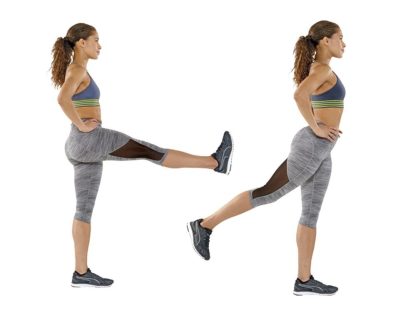
Leg Swings
Position yourself near a wall for support
Swing one leg forward and backward, gradually increasing the range of motion
Repeat for 10-15 swings on each leg

Arm Circles
Extend your arms to the sides
Make small circles in a forward motion for 15 seconds, then backward for 15 seconds
Gradually increase the circle size
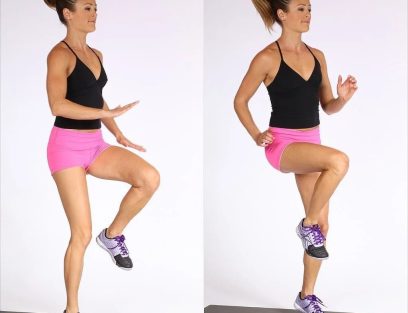
High Knees
Stand upright and jog in place, lifting your knees as high as comfortably possible
Continue for 30 seconds, gradually increasing speed

Torso Twists
Stand with feet shoulder-width apart
Twist your torso from side to side, engaging your core
Repeat for 10-15 twists on each side
Static Stretches for Post-Activity Recovery
After the exhilaration of winter sports, static stretches play a crucial role in improving flexibility and reducing muscle tension. Integrate these stretches into your post-activity routine

Hamstring Stretch
Sit on the floor with one leg extended straight. You can also perform this exercise standing
Lean forward, reaching for your toes
Hold for 15-30 seconds on each leg

Chest Opener Stretch
Stand tall, interlock your fingers behind your back, and straighten your arms
Lift your arms slightly, opening your chest
Hold for 15-30 seconds
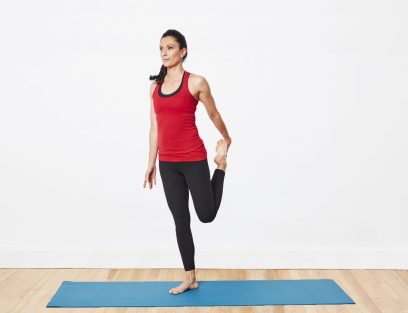
Quadriceps Stretch
Stand with feet hip-width apart
Bend one knee, bringing your heel toward your buttocks
Hold your foot with your hand, keeping your knees close together
Hold for 15-30 seconds on each leg
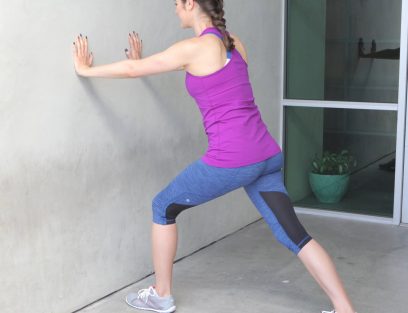
Calf Stretch
Stand facing a wall with hands against it
Step one foot back, keeping it straight, and press the heel into the floor
Hold for 15-30 seconds on each leg
When to Avoid Exercise Due to Pain
Understanding when to refrain from exercise is crucial for your well-being. At Latitude Wellness, we emphasize listening to your body.
During Acute Pain: If you encounter a sudden, sharp, and intense pain while engaged in physical activity, it is crucial to cease the exercise immediately. Acute pain, characterized by its immediacy and severity, serves as a potent signal that should not be ignored. This type of discomfort may be indicative of an underlying injury or strain, and pushing through it can exacerbate the damage.
Persistent Discomfort: Should you find that discomfort persists beyond your exercise routine and fails to alleviate even with adequate rest, it is imperative to seek guidance from a healthcare professional. Ignoring persistent discomfort may not only impede your recovery but also increase the risk of exacerbating the issue, potentially leading to further injury. Prompt consultation with a healthcare expert ensures a comprehensive understanding of the underlying cause and facilitates timely intervention, fostering a swifter path to recovery and minimizing the potential for long-term consequences.
Joint Pain: Pain that originates within the joints, distinct from muscular discomfort, can often signal underlying issues that merit special attention. Joints serve as intricate connections between bones, and any persistent pain in these areas should not be overlooked. It is crucial to exercise caution and steer clear of activities that exacerbate joint pain. Ignoring such discomfort can potentially worsen existing conditions or contribute to the development of more serious issues over time.
Post-Injury Discomfort: During the recovery phase, it’s crucial to steer clear of exercises that induce pain in the injured area. We recognize that embracing rest and refraining from physical activities can be challenging, yet we firmly believe in the necessity of allowing our bodies adequate time to heal. Even with treatment, proper recovery demands a mindful approach—a delicate balance of mind over body. While our minds may urge us to believe we are fully healed, the reality is that our bodies require time. It’s essential to be kind to yourself and approach the return to exercise with gentleness, understanding that a patient and considerate reintegration is key to long-lasting wellness.
What to Do When You are Injured?
In the unfortunate event that you sustain an injury during winter sports or any physical activity, it’s crucial to take immediate and appropriate steps for a safe and effective recovery. Follow these guidelines:
1. Stop and Assess:
— Cease the activity immediately to prevent further damage.
— Assess the extent of pain and discomfort. Listen to your body’s signals.
2. Rest, Ice, Compression, Elevation (R.I.C.E.):
— Rest: Allow the injured area to rest and avoid putting weight or strain on it.
— Ice: Apply ice to the injured area to reduce swelling. Use a cloth or towel to protect the skin and apply for 15-20 minutes every 1-2 hours.
— Compression: Use a compression bandage to reduce swelling and provide support to the injured area. Ensure it’s snug but not too tight
— Elevation: Elevate the injured limb above heart level when possible to minimize swelling
3. Seek Professional Guidance: If pain persists or intensifies, consult a healthcare professional promptly
4. Follow Rehabilitation Recommendations: Adhere to any prescribed rehabilitation exercises provided by a physiotherapist or another healthcare professional
5. Medication and Supplements:
— Take over-the-counter pain relievers as recommended by a healthcare professional to manage pain and inflammation.
— Consider supplements such as omega-3 fatty acids or turmeric, known for their anti-inflammatory properties (consult with one of our amazing naturopathic doctors for information on which supplements will best support your recovery and overl well being).
6. Stay Hydrated and Maintain a Healthy Diet: Consider consulting with our experienced holistic nutritionist who can craft a personalized meal plan tailored to your unique needs. Our nutritionist will provide valuable insights on incorporating essential nutrients, vitamins, and minerals into your diet to support the healing process and promote overall health.
7. Monitor for Signs of Complications: Watch for signs of infection, increased swelling, or persistent pain and report any unexpected changes to your healthcare provider.
8. Emotional Support: Injuries can take a toll emotionally. Seek support from friends, family, or with one of our registered clinical counselors to navigate the mental and emotional aspects of recovery.
9. Rest and Gradual Return to Activity: Give your body the time it needs to rest and recover. This will prevent the exacerbation of the injury. When cleared by healthcare professionals, reintroduce exercise gradually. Focus on strengthening the injured area to prevent future injuries. Ensure you are being mindful about the exercise and movements you are doing with your body.
Remember, every injury is unique, and individualized care is essential. Consult with healthcare professionals for personalized advice based on your specific condition and needs

At Latitude Wellness, we’re not just a wellness center, we’re your partners in wellness. We provide a comprehensive range of services including acupuncture, chiropractic care, cold laser therapy, counselling, naturopathic care, massage therapy, and pelvic floor physiotherapy. We facilitate a seamless experience by accepting most health care insurance plans, allowing you to concentrate on what truly matters—your well-being. Embrace our dynamic stretches, recovery tips, and injury care guidance to ensure a winter season of exhilaration and safety on the slopes— we’re here to support your winter sports journey, every step of the way
